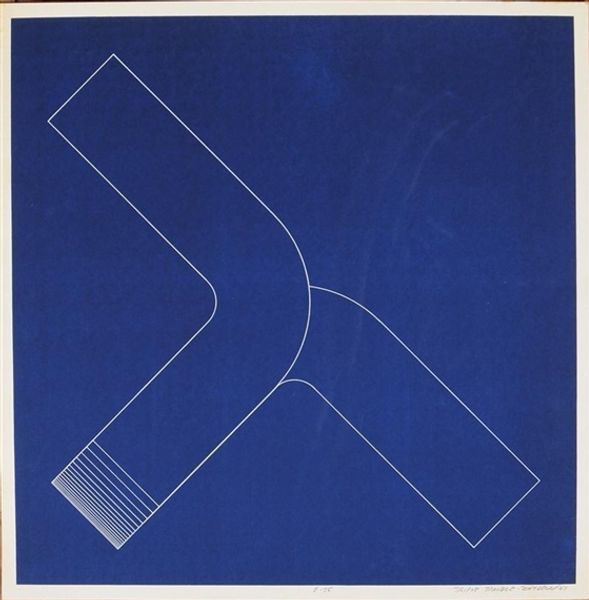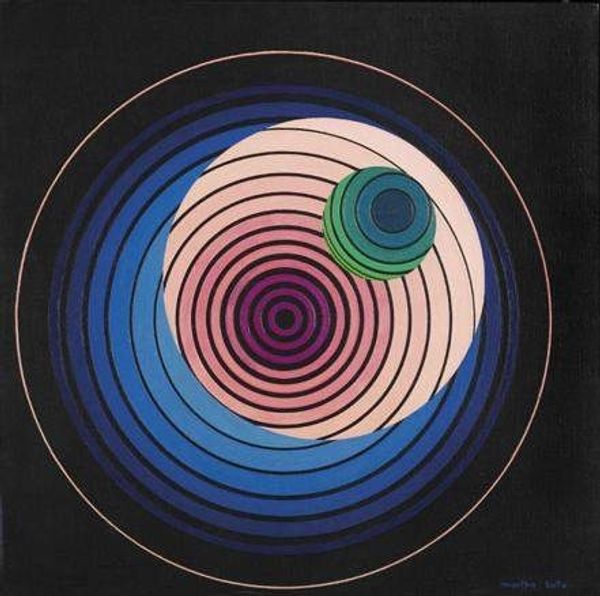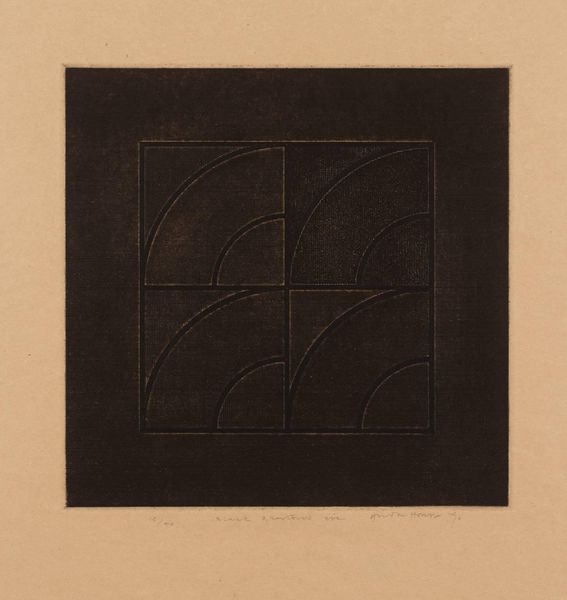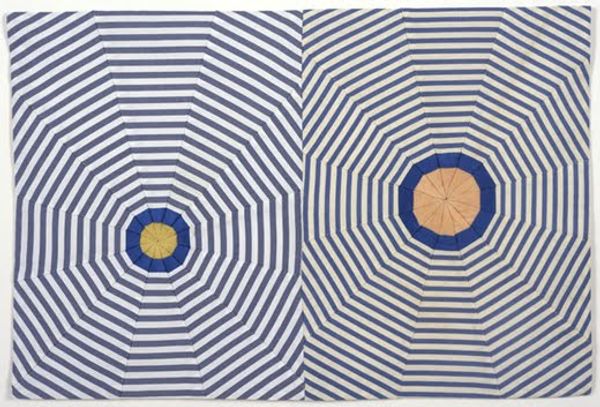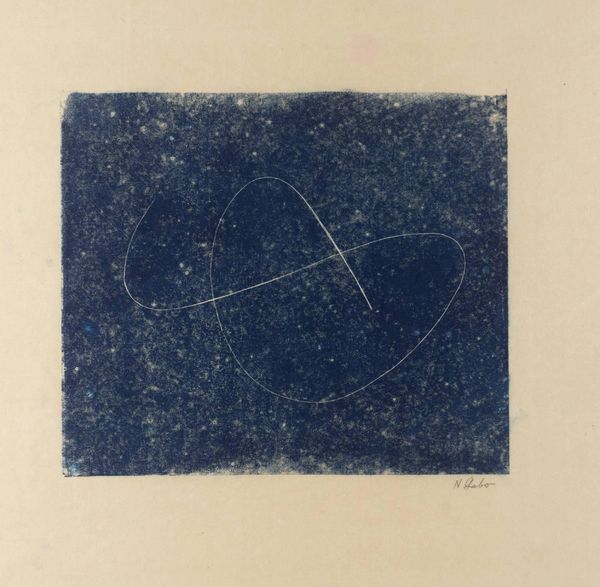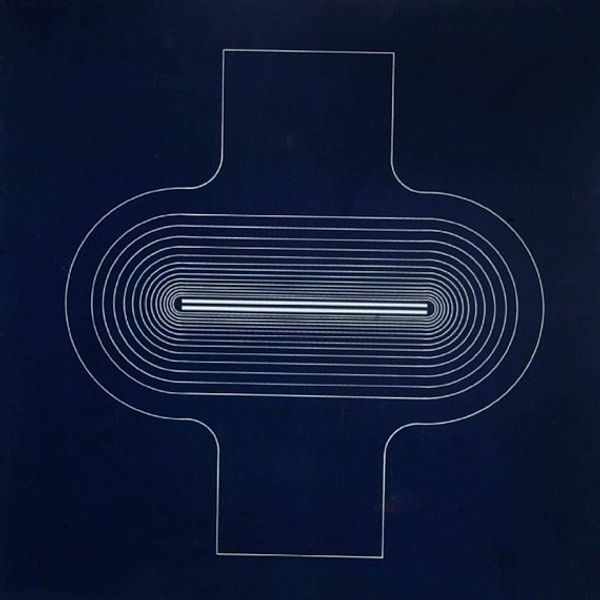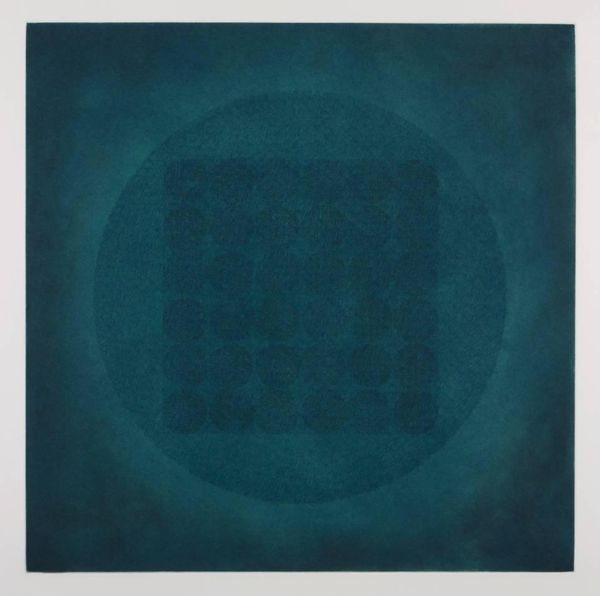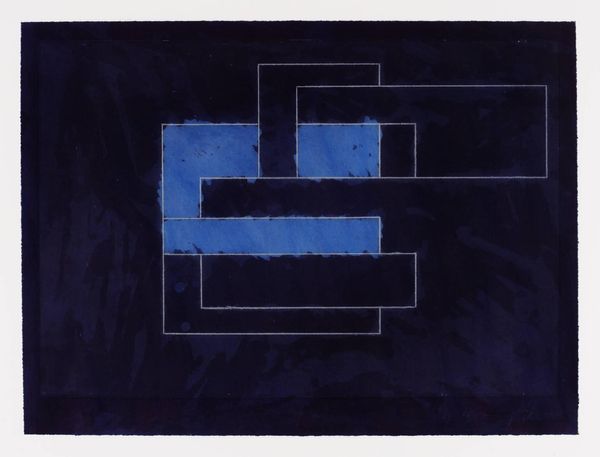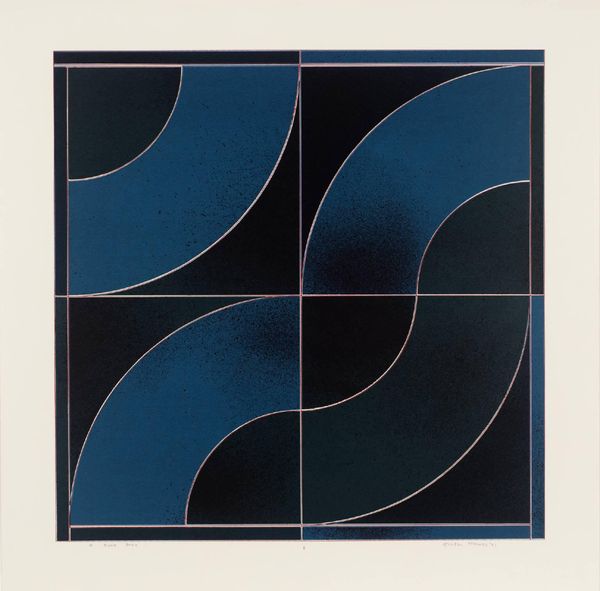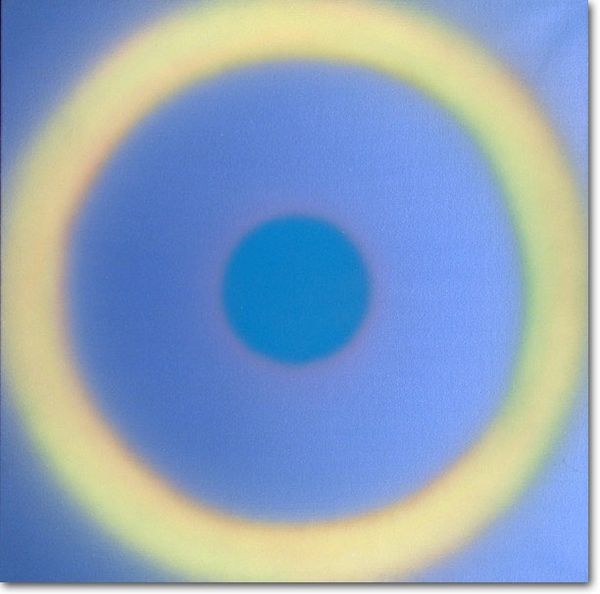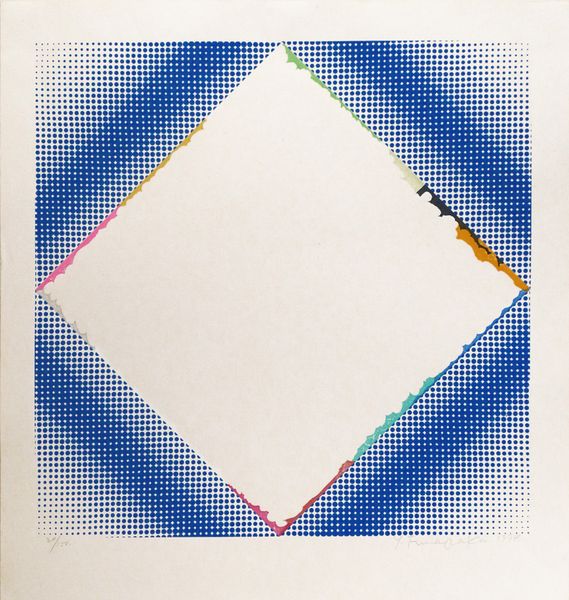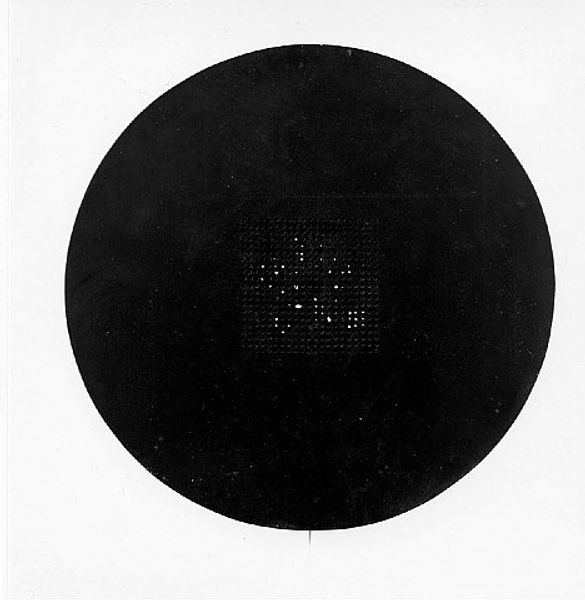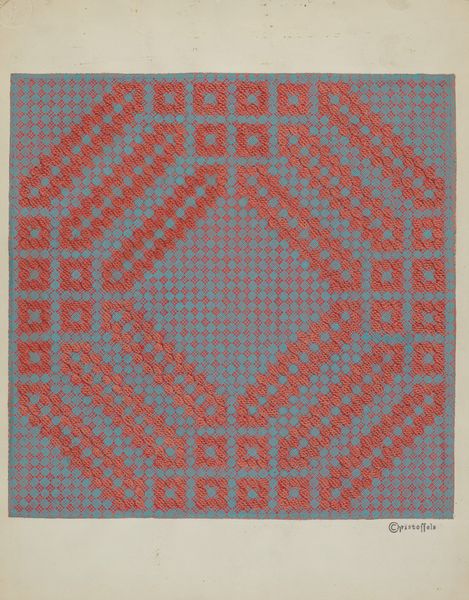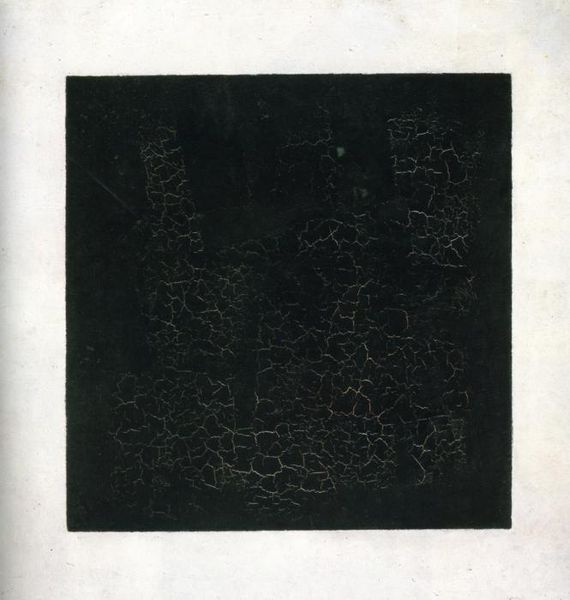
#
blue colour scheme
#
minimalism
# print
#
geometric
#
abstraction
#
digital-art
#
hard-edge-painting
Copyright: Tony DeLap,Fair Use
Editor: Here we have Tony DeLap’s "Mizar" from 1966, a print featuring an intriguing cobalt blue color scheme with concentric geometric shapes. It feels very precise and calculated. What stands out to you when you look at this piece? Curator: The first thing that grabs my attention is the method of production. This is a print, a medium that allows for replication and dissemination, challenging the preciousness of a unique, hand-crafted object. DeLap, though associated with minimalist sculpture, engaged with printmaking and here with hard-edge painting’s visual language. Editor: That's interesting. So, you’re saying that the choice of printmaking itself is a statement? Curator: Precisely! And look closer. The crisp lines and perfect geometric forms achieved through a print process contrasts with the imperfections we may perceive within the colour coating. What does this suggest about labor, production, and consumption in the art world of the 60s? Was this created entirely digitally? Editor: Well, given it's from 1966, probably not *entirely* digital, but maybe some photographic or early computer-aided techniques? Thinking about it in terms of production makes the seemingly simple image feel much more complex. It is more than *just* geometry! Curator: Exactly. DeLap uses industrial materials, to create an illusion, challenging our perception, yet also highlighting the means of creating such work through printmaking and materiality of medium itself. What is his purpose with these stark contrast and perfect visual? Editor: I guess he’s prompting us to consider not just *what* we see, but *how* it was made and where it fits within the broader artistic and social landscape. That shifts the meaning entirely! Curator: And isn't that precisely the materialist approach to art? Examining labor, material conditions, and processes of production? This piece isn’t just a pretty abstraction. It embodies ideas about artmaking, challenging established hierarchies between fine art and reproduction.
Comments
No comments
Be the first to comment and join the conversation on the ultimate creative platform.
